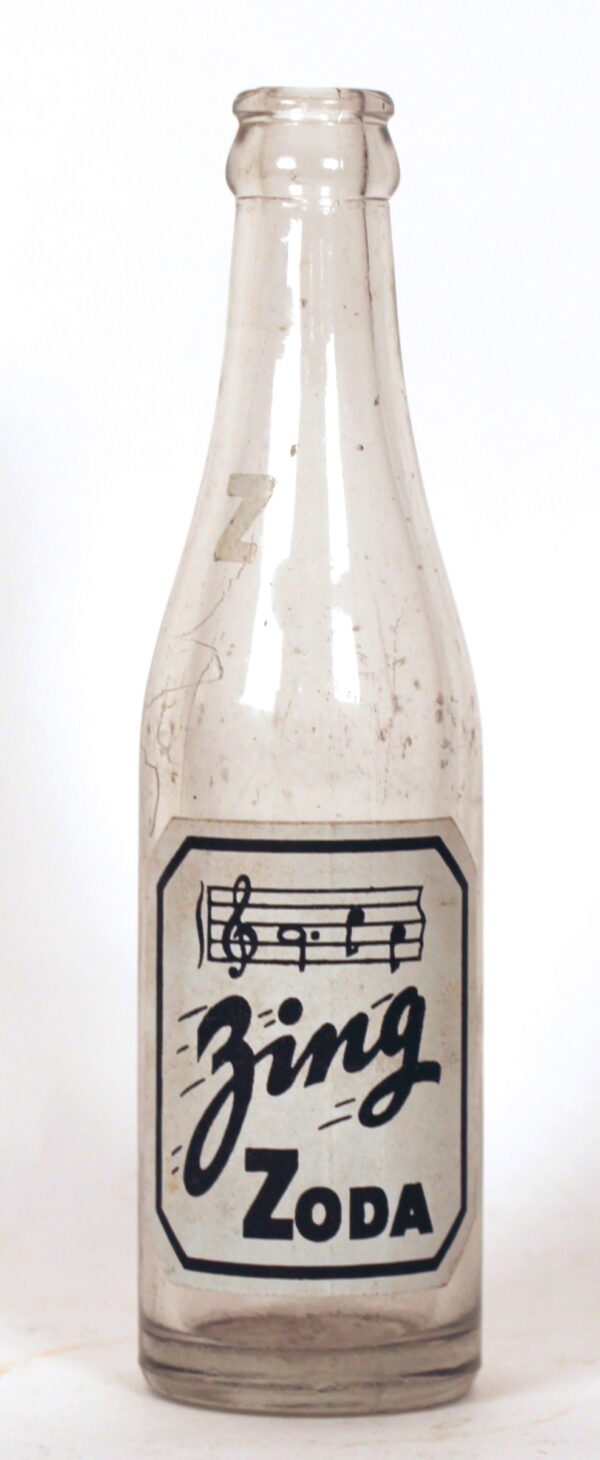
Zing Zoda Painted Label Soda Bottle, Millstadt, IL. Circa 1940
This is a very rare Zing Zoda ACL Soda Bottle from the Kay-B Company in Millstadt, Illinois. Circa 1940.
CONTACT US FOR A FREE APPRAISAL OF YOUR ANTIQUE ADVERTISING COLLECTIBLES!
CONTACT US FOR A FREE APPRAISAL OF YOUR ANTIQUE ADVERTISING COLLECTIBLES!
CONTACT US FOR A FREE APPRAISAL OF YOUR ANTIQUE ADVERTISING COLLECTIBLES!
Antique advertising wine collectibles from the late 1800’s and early 1900’s include signs made from metal, wood or cardboard. Other wine collectibles of interest are postcards, magazine ads, bottle labels and tin serving trays.
Etched wine glasses and wooden crates were also utilized at the early wineries to get their name out and are sought after by collectors. The very early advertising wine collectibles prior to the national Prohibition that started in 1920 still remains highly pursued and is considered valuable.
Wine companies would claim health benefits as a way to help improve their sales. Wine was advertised as a health cure for common ailments and this was especially vital during Prohibition when wine was legal only for medicinal purposes.
There was an increase in the number of customers requesting wine for their family members or for themselves during Prohibition to help with illnesses or other health issues.
Wine has been produced in the United States since the 1830’s and the U.S. is the fourth largest wine producing country in the world. Throughout the 19th century, as immigrants from Europe’s great wine regions arrived, many initially set up wineries in New York, Ohio and Missouri. After the westward movement and California Gold Rush, the increased population and warmer climates of California proved to be a better area to make wine. California now has 89% of the wine production in the U. S.
Brotherhood Winery is one of the oldest operating companies in the U.S. It’s located in New York and produced its first vintage in 1839. Another early wine producer was the American Wine Company from St. Louis, Missouri that produced Cook’s Imperial Champagne. The American Wine Company later merged with Korbel’s from California and the Cook’s name was discontinued. However, the original advertising for The American Wine Company is sought after.
Pleasant Valley Wine Co. in New York was founded in 1860 and invested in equipment to make sparkling wine during the Civil War. The winery had ads that claimed their Great Western Champagne and good nursing saved the lives of soldiers. Pleasant Valley Wine Co. is still open and operational today.
The national Prohibition impacted the wine industry from 1920 to 1933 because it was forbidden to make, sell or transport intoxicating liquors including wine. A loophole allowed people to make 200 gallons of non-intoxicating cider and fruit juice each year. The price for fresh grapes increased because of the high demand and a lack of refrigerated railroad cars to transport them. Some wineries survived by getting permits to make wine for medicinal purposes.

This is a very rare Zing Zoda ACL Soda Bottle from the Kay-B Company in Millstadt, Illinois. Circa 1940.
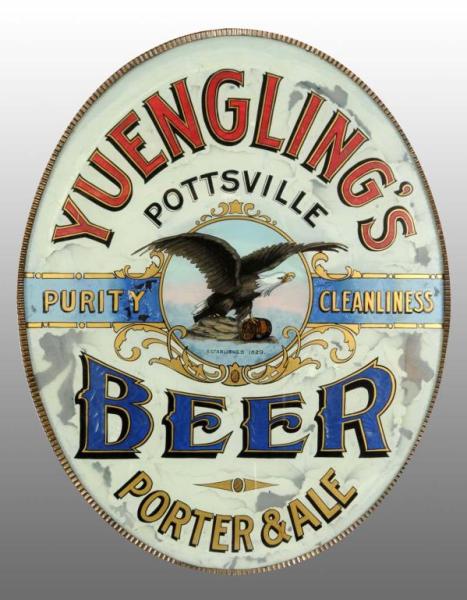
Photographed is a very rare reverse on glass corner beer sign from the Yuengling’s Brewery which is in Pottsville, Pennsylvania.

This is an incredibly colorful and bold tin corner sign from the York, Pennsylvania Brewing Company with the proprietor’s name on it, Karl Katz. This sign is circa 1900.

A nicely framed tin sign from the Taylor and Williams Distilling Company in Louisville, Kentucky advertising their Yellowstone brand of whiskey. Circa 1905.
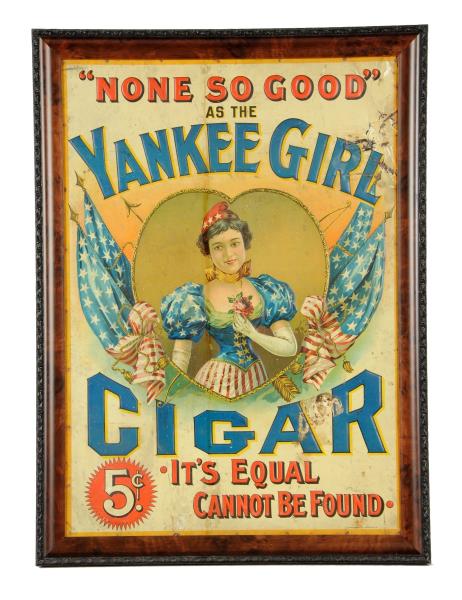
Featured is a beautiful tin sign from the Yankee Girl brand of cigars, circa 1900. The sign has a price of 5 cents per cigar, and boldly claims “It Equal Cannot Be Found”.
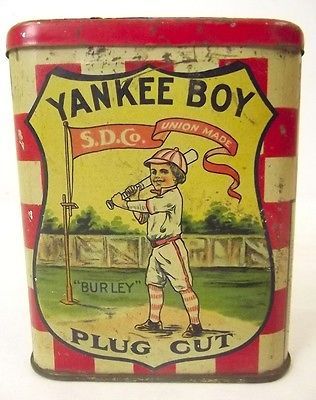
Yankee Boy Pocket Tobacco Tin, featuring a baseball player called Yankee Boy Brand. This brand was fairly popular 100 years ago and pocket tobacco tins are highly collected today. Circa 1917.
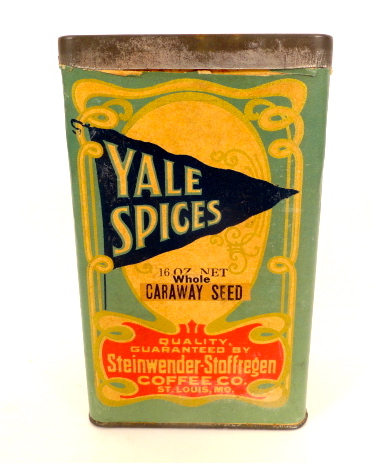
This is a “Yale Spice” tin from the Steinwender-Stoffregen Coffee and Spice Co. based in St. Louis, MO, 1915.

This is a Monkey Brand Roasted Coffee General Store Bin made of tin from the Steinwender-Stoffregen Coffee and Spice Co. based in St. Louis, MO, circa 1910. The Steinwender-Stoffregen Company was known for their flagship Yale brand of coffee in the early 1900’s. However, the Monkey brand was a top seller also for the company, but paled in comparison to the sales of their Yale brand. The Steinwender-Stoffregen Company won an award as the best coffee at the St. Louis World’s Fair Exposition in 1904.
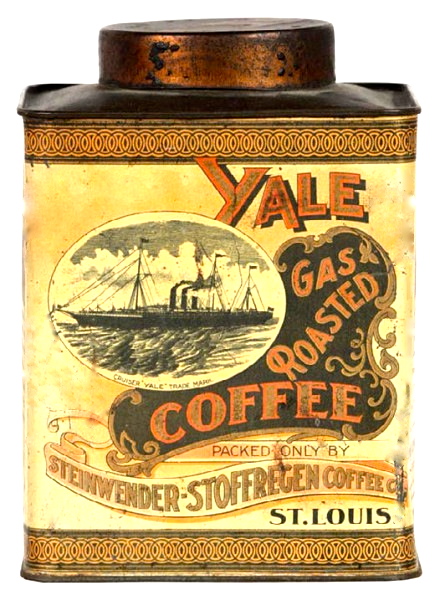
This is a Yale Gas Roasted Coffee tin from the Steinwender-Stoffregen Coffee and Spice Co. based in St. Louis, MO, 1905.

Pictured is a beautiful Wunder Beer serving tray from the Wunder Brewing Company in San Francisco, California. Circa 1905. The Wunder Brewing Company was at the corner of Greenwich and Scott streets and was in existence from 1898-1909.